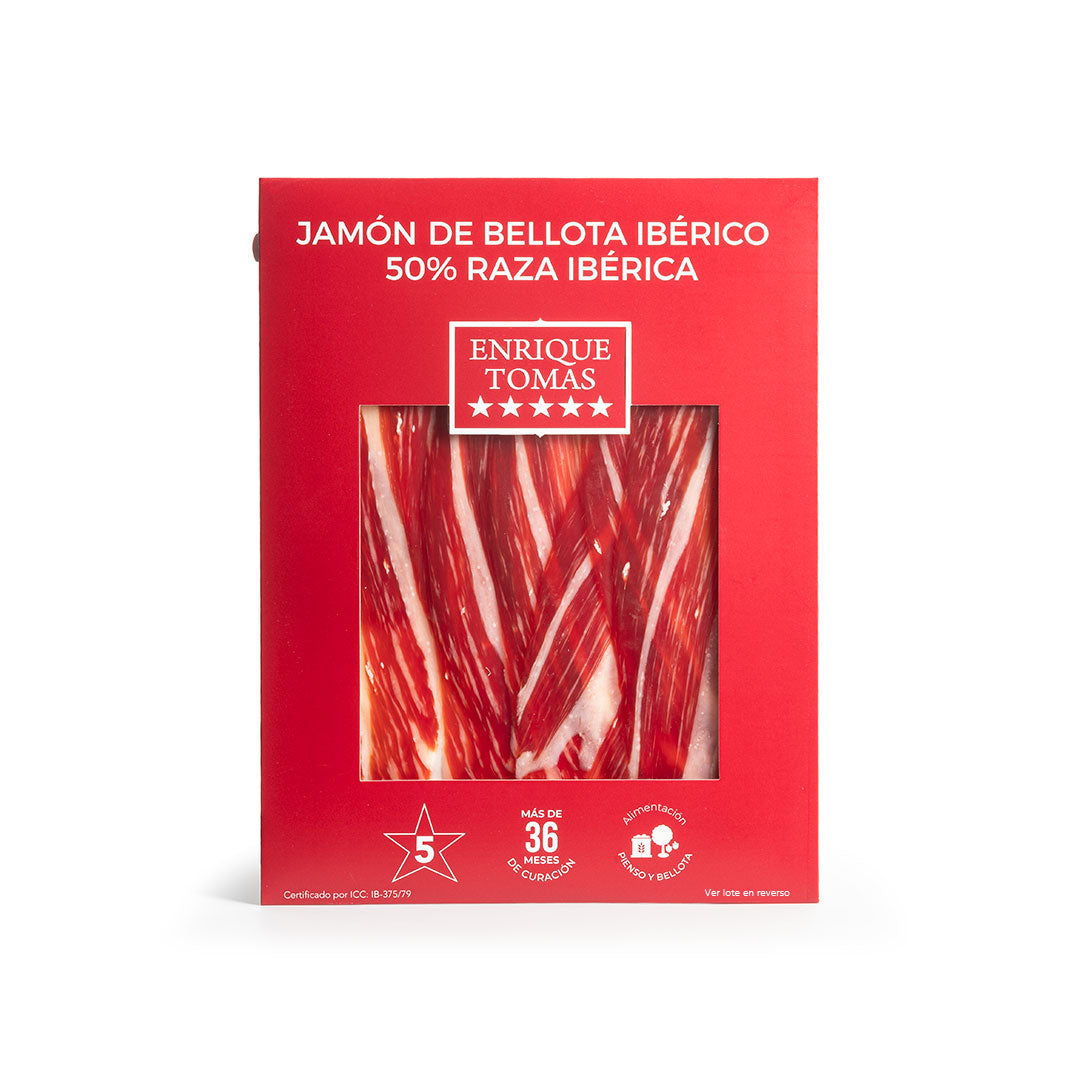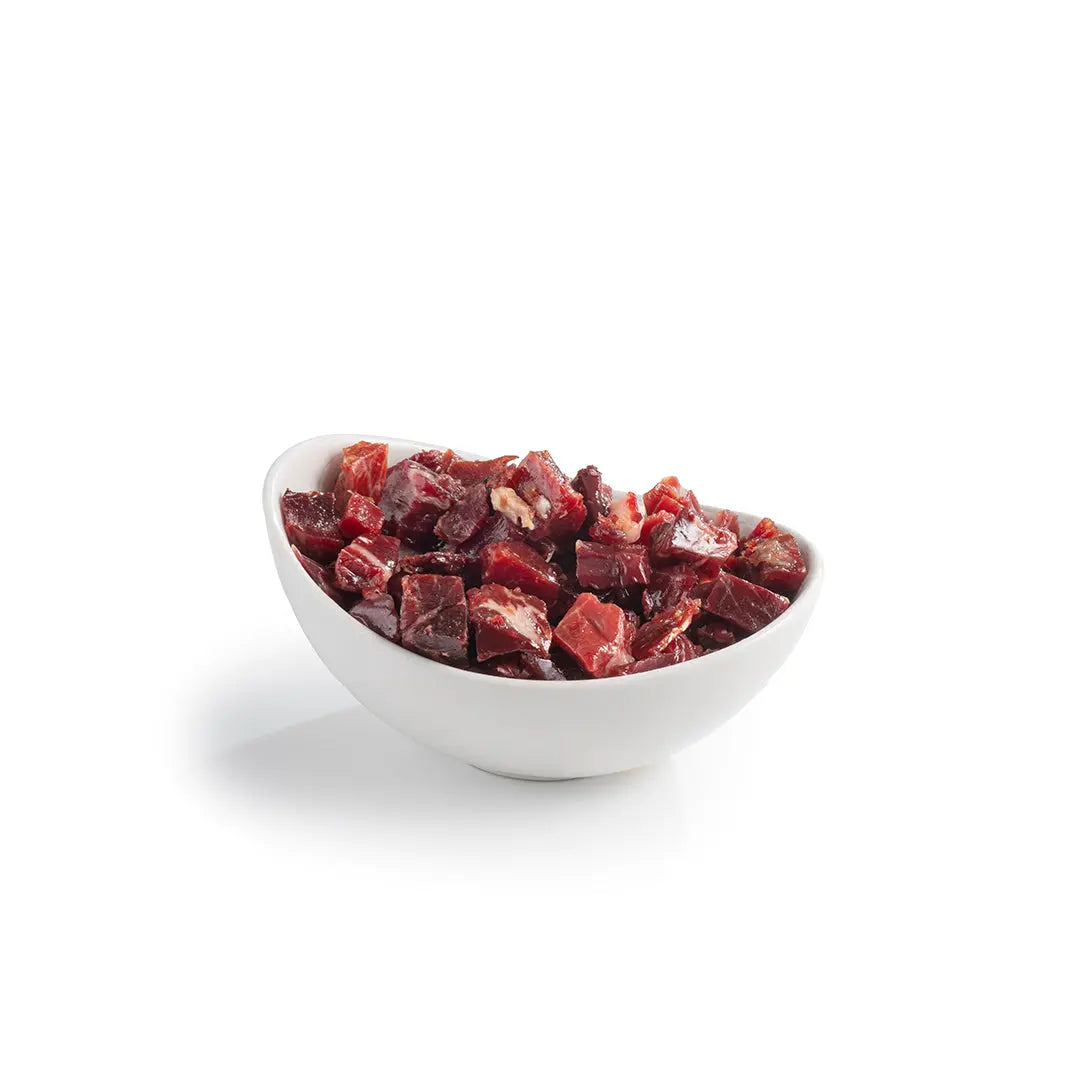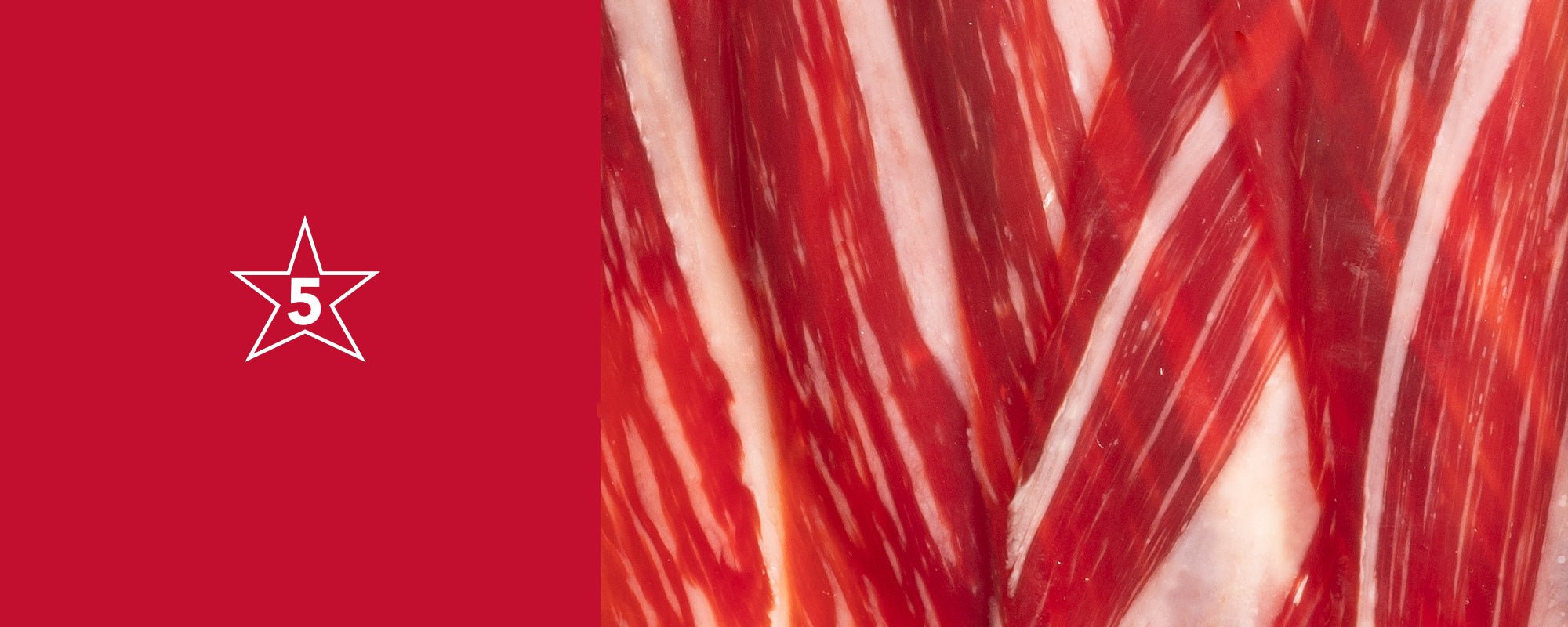15 products
-

 Bellota 50% ibérico ham- Selection | Sliced ReadyBellota 50% ibérico ham- Selection | Sliced Ready
Bellota 50% ibérico ham- Selection | Sliced ReadyBellota 50% ibérico ham- Selection | Sliced Ready- Regular price
-
452,40 € - Regular price
-
0,00 € - Sale price
-
452,40 €
Envío gratisQuick view
-

 50% Iberian Acorn-Fed Ham - Selection50% Iberian Acorn-Fed Ham - Selection
50% Iberian Acorn-Fed Ham - Selection50% Iberian Acorn-Fed Ham - Selection- Regular price
-
442,56 € 452,40 € - Regular price
-
0,00 € - Sale price
-
442,56 € 452,40 €
Envío gratisQuick view
-

 Bellota 50% Iberian Ham Shoulder-Selection | Sliced ReadyBellota 50% Iberian Ham Shoulder-Selection | Sliced Ready
Bellota 50% Iberian Ham Shoulder-Selection | Sliced ReadyBellota 50% Iberian Ham Shoulder-Selection | Sliced Ready- Regular price
-
225,22 € - Regular price
-
0,00 € - Sale price
-
225,22 €
Envío gratisQuick view
-

 Bellota 50% Iberian Ham 1/2- BonelessBellota 50% Iberian Ham 1/2- Boneless
Bellota 50% Iberian Ham 1/2- BonelessBellota 50% Iberian Ham 1/2- Boneless- Regular price
-
128,50 € - Regular price
-
- Sale price
-
128,50 €
Envío gratisQuick view
-

 Jamón and wine pack - 50% bellota Iberian HamJamón and wine pack - 50% bellota Iberian Ham
Jamón and wine pack - 50% bellota Iberian HamJamón and wine pack - 50% bellota Iberian Ham- Regular price
-
191,78 € - Regular price
-
0,00 € - Sale price
-
191,78 €
Envío gratisQuick view
-

 Pack ahorro Jamón Bellota 50%Pack ahorro Jamón Bellota 50%
Pack ahorro Jamón Bellota 50%Pack ahorro Jamón Bellota 50%- Regular price
-
174,07 € - Regular price
-
0,00 € - Sale price
-
174,07 €
Envío gratisQuick view
-

 50% Iberian Acorn-Fed Ham Shoulder - Selection50% Iberian Acorn-Fed Ham Shoulder - Selection
50% Iberian Acorn-Fed Ham Shoulder - Selection50% Iberian Acorn-Fed Ham Shoulder - Selection- Regular price
-
166,21 € 225,22 € - Regular price
-
0,00 € - Sale price
-
166,21 € 225,22 €
Envío gratisQuick view
-

 1/2 Bellota 50% Iberian Ham Shoulder - Boneless1/2 Bellota 50% Iberian Ham Shoulder - Boneless
1/2 Bellota 50% Iberian Ham Shoulder - Boneless1/2 Bellota 50% Iberian Ham Shoulder - Boneless- Regular price
-
111,00 € - Regular price
-
- Sale price
-
111,00 €
Quick view
-

 Book of the Jamón Experience - 5 QualitiesBook of the Jamón Experience - 5 Qualities
Book of the Jamón Experience - 5 QualitiesBook of the Jamón Experience - 5 Qualities- Regular price
-
93,50 € - Regular price
-
- Sale price
-
93,50 €
Quick view
-

 Enrique Tomás 5 Stars ham shavings -400gEnrique Tomás 5 Stars ham shavings -400g
Enrique Tomás 5 Stars ham shavings -400gEnrique Tomás 5 Stars ham shavings -400g- Regular price
-
38,50 € - Regular price
-
- Sale price
-
38,50 €
Quick view
-

 Enrique Tomás 5 Stars Ham cubes -400gEnrique Tomás 5 Stars Ham cubes -400g
Enrique Tomás 5 Stars Ham cubes -400gEnrique Tomás 5 Stars Ham cubes -400g- Regular price
-
38,50 € - Regular price
-
- Sale price
-
38,50 €
Quick view
-

 Bellota 50% Iberian Ham - Sachet 80 grBellota 50% Iberian Ham - Sachet 80 gr
Bellota 50% Iberian Ham - Sachet 80 grBellota 50% Iberian Ham - Sachet 80 gr- Regular price
-
26,30 € - Regular price
-
- Sale price
-
26,30 €
Quick view
-

 Bellota 50% Iberian Ham Shoulder - Sachet 80 grBellota 50% Iberian Ham Shoulder - Sachet 80 gr
Bellota 50% Iberian Ham Shoulder - Sachet 80 grBellota 50% Iberian Ham Shoulder - Sachet 80 gr- Regular price
-
24,50 € - Regular price
-
- Sale price
-
24,50 €
Quick view
-

 Enrique Tomás 5 Stars Ham Shavings -100grEnrique Tomás 5 Stars Ham Shavings -100gr
Enrique Tomás 5 Stars Ham Shavings -100grEnrique Tomás 5 Stars Ham Shavings -100gr- Regular price
-
15,00 € - Regular price
-
- Sale price
-
15,00 €
Quick view
-

 Enrique Tomás 5 Stars Ham cubes -80gEnrique Tomás 5 Stars Ham cubes -80g
Enrique Tomás 5 Stars Ham cubes -80gEnrique Tomás 5 Stars Ham cubes -80g- Regular price
-
15,00 € - Regular price
-
- Sale price
-
15,00 €
Quick view
FREQUENTLY ASKED QUESTIONS
WHERE CAN I BUY IBERIAN HAM?
You can purchase it at gourmet stores in the country where you live. If you can't find it or it's not the one you like, you just need to order it through our website/online store, and we will quickly and safely deliver it to wherever you want.
WHAT IS IBERIAN HAM?
Iberian ham is unique in the world and comes exclusively from the pig of the same name, the Iberian pig, which has the exclusive ability to infiltrate fat into the muscle. It is made from the hind legs, cured in salt, and dried in natural cellars by expert ham makers who follow a long tradition passed down from generation to generation.
WHAT ARE THE DIFFERENT TYPES OF IBÉRICO HAM?
Iberian ham can be classified based on the breed and the diet. Regarding the breed, it will be classified based on the percentage of the breed, 50%, 75%, or 100%. As for the diet, Iberian ham can be called "de cebo ibérico" if it has stayed only on the farm and has eaten feed and cereals, "cebo de campo ibérico" if it has had some freedom in the field while still being fed on the farm, and "bellota ibérica" in the case where it has undergone the Montanera process, meaning it has grazed on wild herbs and acorns in the pasture until reaching the appropriate weight.
WHAT IS THE BEST IBERIAN HAM?
To determine which one is the best, if you are not familiar with them, it's ideal to try them all, and the one you like the most will be the best. At Enrique Tomás, we know that the best ham is the one that delights your palate when you taste it, regardless of the price or variety. The important thing is that, whatever it may be, you buy the best quality within its range.
HOW/WHEN TO EAT HAM?
El jamón se consume a cualquier hora del día, en el desayuno, la comida y la cena. Y, por supuesto, como merienda. Dependiendo de la hora del día, puede comerse en forma de bocadillo, en tacos como tapa, en lonchas como aperitivo, como taquitos o virutas de jamón con una sopa o una ensalada. Puedes disfrutarlo a todas horas, sólo tienes que elegir el formato que más te convenga según el momento del día y según el plato.
CAN I BUY A WHOLE PIECE OF IBERIAN HAM AND ASK FOR IT TO BE CUT?
Ham is consumed at any time of the day, for breakfast, lunch, and dinner. And, of course, as a snack. Depending on the time of day, it can be eaten in the form of a sandwich, in chunks as a snack, in slices as an appetizer, as small pieces or ham shavings with soup or a salad. You can enjoy it at any time, you just have to choose the format that suits the time of day and the dish.
DO I BUY HAM ON THE BONE OR SLICED?
Answering this question with another question: Do you master the cutting technique? If you've never cut Spanish ham or feel unsure, it's best to order it pre-sliced because not only will you avoid any mishaps, but you'll also get more ham compared to if you cut it yourself because our experts make the most of it.
On the other hand, the great advantage of ordering it sliced is that you can consume it as needed over several months, whereas if you buy it whole (with the bone), it's recommended to consume it within about three weeks, and the shoulder within two weeks.
WHAT YOU NEED TO KNOW ABOUT IBERIAN HAM
Did you know that Iberian ham comes from the hind leg of the authentic Iberian pig from the Iberian Peninsula? Let's start from the beginning, delving a bit more into this ham based on three variables that allow us to differentiate it perfectly: the breed, the diet, and the origin.

THE BREED: THE IBERIAN PIG
The Iberian pig is a unique species with characteristics that set it apart from other animals of the same species, such as the ability to infiltrate fat into the muscle. Physically speaking, these animals have a well-proportioned head and a pointed snout. Unlike other types of pigs, the Iberian pig has a powerful neck, a drooping dewlap, medium-sized ears shaped like a visor, and a broad belly. Its limbs, which are of particular interest when it comes to ham, are slender.

THE CURING PROCESS OF IBERIAN HAM
Another one of the most important variables to consider in distinguishing Iberian ham, especially 100% Iberian ham, from the rest, is what we call at Enrique Tomas: "the curing process." This curing process involves nothing more and nothing less than the conditions in which the leg is preserved, the amount of salt used, the storage temperature, and the curing time. In essence, ham is cured with time, expertise, care, and salt.

In the case of Iberian ham, from the moment the animal is born until the entire process is completed and we purchase it, it can take up to five years. For its curing, the ham needs to be salted and left to cure at an exact temperature. This curing process lasts between thirty-six to forty-eight months, depending on the weight of each piece.
TYPES OF IBERIAN HAM
The types of Iberian ham are obviously determined by the breed, which is always Iberian, the place or places where it has been raised, and most importantly, the type of diet it has followed in adulthood.
Iberian pig raised exclusively on a farm
An Iberian pig raised exclusively on a farm has been fed with food and cereals, even in adulthood. These are usually pigs with a 50% Iberian breed. That is, a mother that is 100% Iberian and a father of a non-Iberian breed. The result is an Iberian cebo ham.
Iberian pig raised on a farm and in the countryside
This Iberian pig typically has a percentage of Iberian breed of 50% or 75% and has been raised partly on a farm where it was fed with food and partly in the countryside where it could graze freely and eat wild fruits and herbs. The result is an Iberian cebo de campo ham.
Iberian pig that has undergone the Montanera period
These Iberian pigs, like the others, have been raised on a farm and have been fed with food, but when they reach adulthood, due to their quality and the percentage of Iberian breed, the farmer decides that they should undergo the Montanera period.
The Montanera is a 4-month period that goes from autumn to winter, during which Iberian pigs graze freely in the Spanish dehesa, an area where the oak trees are ready to provide the best fruits that the Iberian pig needs to produce the most coveted Iberian ham in the world, the Jamón de Bellota.
These pigs do not only eat acorns and everything natural they find, but they also drink water from the rivers, which makes them exercise a lot, contributing to good musculature in their limbs. All of this contributes to the production of the best ham in the world, the 100% Iberian Jamón de Bellota, also popularly known as Pata Negra, meaning ham that comes from 100% Iberian parents. However, there can also be 50% Iberian Jamón de Bellota, where the mother must also be 100% Iberian, but the father is not of Iberian breed.
Jamón de Bellota 100% Iberian, 5 Estrellas Premium, Enrique Tomás
Jamón de Bellota 50% Iberian, 5 Estrellas, Enrique Tomás






































